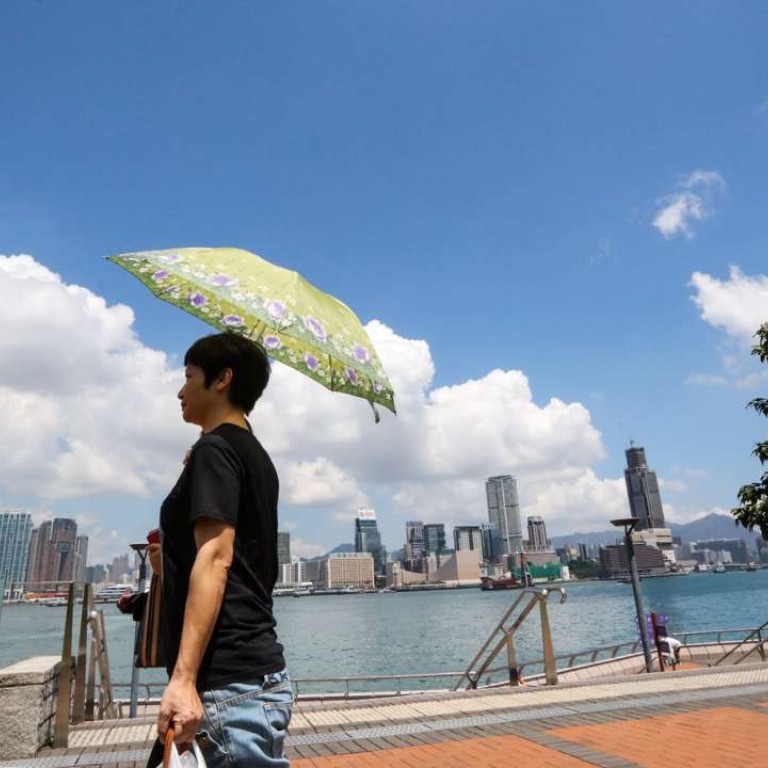
Urban planners want harbourfront markets and cafes, not cookie-cutter development
Designers and urban planners lament cookie-cutter plans and ‘regimented’ designs, saying officials need to think outside the box
Victoria Harbour has long been one of Hong Kong’s crown jewels – a rare, natural, deep-water harbour that provides shelter for vessels. As residential districts developed further out of the centre of Kowloon and Hong Kong Island, the harbourfront expanded concurrently.
The government recently touted its efforts to develop the nearly 73km-long waterfront into a “world-class harbourfront”, highlighting the completion of the 1km-long Kwun Tong promenade as an example of creating “an attractive and vibrant waterfront for citizens”.
While urban planners and designers welcome the open space created, they do not believe what has been given to the public is the best use of the harbourfront. And they feel that in this case, the government is not the solution, but the problem.

“Right now we do have some very nice open green space for the public to enjoy along our harbourfront, but it’s the best that we can achieve under current legislation,” Harbourfront Commission member Ivan Ho Man-yiu said. He represents the Hong Kong Institute of Urban Design.
“Basically what we’ve achieved is passive open space, such as parks and landscape areas. This is under the management of the Leisure and Cultural Services Department [LCSD].
“Because of this, it limits the variety and different uses of the harbourfront. If we continue without any change, the best we can do is eventually we will change all our harbourfront into some sort of passive open space. To us, that’s not ideal.”
The Kwun Tong promenade, adjacent to Kwun Tong bypass, provides 4.2 hectares of leisure and recreational public space. It includes a 1km-long seaside boardwalk, two pavilions, a children’s play area, viewing platforms and a light refreshment kiosk.
Paul Zimmerman, CEO of urban design NGO Designing Hong Kong said it was a boon to have the former Kwun Tong public cargo working area site available to the public, but the promenade was another standard government department design, and thinking outside of the box about uses for such spaces was required.
“Under the highway it would be great to have a cooked food market. It would become a destination instead of a passive public space for people who live there,” he said.
Zimmerman believes the government needs to move aside and let the public decide the best use for the open space naturally, instead of applying “regimented designs”, which end up defining how the space is used.
“The ideal way of planning the waterfront is once you’ve got the space, just put grass [there] and don’t do anything else. See how people use it,” he said.

Zimmerman cited the Western District public cargo working area as the best example of natural use of the waterfront.
The popular area is used by Kennedy Town residents despite there being no railings along the waterfront or other amenities. The site is abuzz with various activities including cycling, jogging, reading, fishing, drone flying and yoga, all without government rules or regulations.
If the LCSD became involved in developing the cargo working area in the future, it would “kill the space”, Zimmerman said.
While the Harbourfront Commission is in charge of developing and designing the harbourfront, Ho wants to see a separate department managing the area, taking over such responsibilities from the LCSD.
“On many occasions, we asked whether we could have some coffee shops or restaurants along our waterfront; [the LCSD] said they cannot do that. Because of the mandate they have, they cannot do it,” he said.
Establishing a more powerful harbourfront authority would allow a single entity to run Hong Kong’s waterfront and eliminate interdepartmental barriers. However, setting up this statutory body has been slow.
In August, development minister Paul Chan Mo-po revealed that the government had yet to come to a decision about establishing a governing authority, citing the large financial commitments involved and land investment as obstacles.
Pleasure craft activity along the harbourfront is consistently absent from waterfront development plans.
“A second problem with [the Kwun Tong promenade] is that it’s on the water’s edge, but [there’s] a glass wall. It’s on the edge of a typhoon shelter where vessels are going to be, but you don’t allow anyone to connect between the land and the vessels because you put [up] a glass wall,” Zimmerman said.

He blamed the strict mandates of the LCSD and the Marine Department for harbour planning not including ways for pleasure craft to use the waterfront.
With declining use of public cargo handling basins, such as in Wan Chai, Causeway Bay and Chai Wan, new ideas are being put forward on the best use for those areas.
Development minister Chan unveiled plans for the Wan Chai basin to be used for sunbathing and water sports, including a floating pool.
David Robinson, founder of maritime news magazine Fragrant Harbour, dismissed the development minister’s plans, believing that the best way to utilise the basins and underused typhoon shelter spaces was by creating public marinas.
“We could have 400 moorings laid in Kwun Tong in six months, and that place could be operating as a municipal marina,” he said.
Much like waterfronts in the US and Europe, Hong Kong could have restaurants and cafes along the boardwalks that would service those with pleasure craft and those without them, allowing for maximum use of not only the harbourfront, but also the waters along it, according to Robinson.
Despite waterfront development not being optimised, the government has been active in reserving land along the harbourfront for public use.
The Central Harbourfront is a multi-use area that has been the site of several events, as well as an open space for spontaneous use by the public.
Both Zimmerman and Ho believe these are signs that make them optimistic about the harbourfront’s future.

